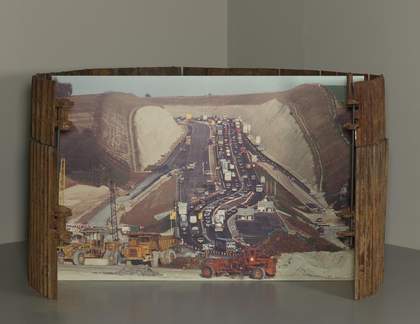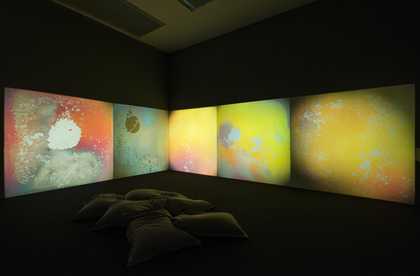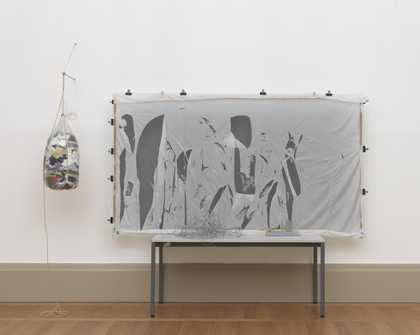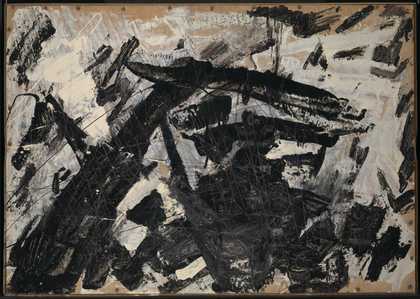Gustav Metzger: We’re on Level Five of Tate Modern in London, and this morning we’ve just put up this display of the London newspaper, London national newspaper, the Daily Express. And they were put up in a completely random manner. We hadn’t cut it up or organised it; we just took two newspapers and opened them up and put them up as they came, without trying to make a storyline or colour relationships. And then on Monday, hopefully, we will buy the Express again, take the previous day’s down, put the new one up; and each day the configuration that we have today, we will not aim to repeat it. On the contrary, we will each day have a different configuration on the wall. Since 1960 when I first used newspapers, I have thought a great deal about them, and my attitude is in fact to encourage people to look carefully at newspapers, but analytically and critically. I think what I said with the Daily Telegraph in 1960 is that this is the world; look at it, and deal with it; and I emphasise the need to fight the newspapers, to fight the power of the newspapers and the power of capital, which is tied up with the whole media. So I am perfectly happy to continue today and into the future with this general approach, that newspapers are reality; they represent reality; they also shape reality in as far as they influence world politics. And so it is up to us to deal with them. And one way of dealing with them is by looking at the whole of the newspaper. This was put up an hour ago, and I was actually amazed at the beauty. Now, this is very important. I was astonished that the tonality, it’s like a painting. Now you might argue; some people might argue, well how can you talk of beauty in the face of what’s there? Murder, war, crime, drugs? Well, one can; and I think we must. The point that is relevant is that we must look at everything. We should look at everything, and take it as it is, and not just say, you can’t respond to this as beauty because the subject matter is so horrific. What I am interested in is complexity. I would like to see thirty, forty levels of response in the face of this wall, and I’m sure we’ll get it. And it’s up to the individual. There will be thousands of people passing through this exhibit in the next three days. Each person will have their own view, their own response, and all I can do is to encourage that complexity of response by showing something which has never been seen before. This is an original, potential experience.






